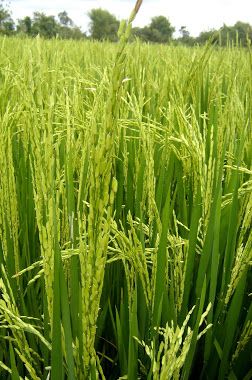Unleashing Synergy: Integrated Agriculture – The Next Frontier of Smart Farming
Integrated Agriculture landscape is undergoing a significant transformation. Smart agriculture, with its arsenal of data-driven technologies, is revolutionizing how we farm. However, to truly maximize its potential, a holistic approach is needed. This is where the concept of integrated agriculture steps in.
Integrated agriculture goes beyond simply implementing smart tools. It emphasizes the interconnectedness of various farming practices, fostering a synergy that optimizes overall farm performance. By breaking down siloed operations and promoting a more holistic perspective, integrated agriculture empowers farmers to create a robust and sustainable agricultural system.
Contents
The Pillars of Integrated Agriculture
Integrated agriculture rests on several key pillars that work together to create a more efficient and productive farming system.
- Data-driven decision-making: Smart technologies like precision agriculture sensors and weather monitoring systems gather real-time data on soil conditions, crop health, and environmental factors. This data becomes the cornerstone for informed decisions regarding irrigation, fertilization, and pest control.
- Resource optimization: Integrated agriculture promotes the efficient use of resources like water, nutrients, and energy. Precision irrigation systems minimize water wastage, while intelligent nutrient management ensures optimal crop growth without environmental pollution.
- Interconnected systems: Individual smart technologies become far more powerful when they seamlessly communicate with each other. Integrated platforms that combine data from sensors, farm management software, and weather forecasts allow farmers to have a comprehensive view of their operations and make holistic adjustments.
- Circular economy principles: Waste not, want not. Integrated agriculture encourages the adoption of circular economy practices. Crop residues can be composted to create nutrient-rich fertilizer, while livestock waste can be transformed into biogas for energy generation.
The Advantages of Integrated Agriculture
By integrating various aspects of farming, numerous benefits accrue to both farmers and the environment:
- Increased productivity: Data-driven insights and resource optimization lead to improved crop yields and livestock production. Integrated pest management techniques minimize crop losses, further enhancing production efficiency.
- Reduced environmental impact: Precision agriculture minimizes water usage and fertilizer application, reducing environmental pollution. The adoption of circular economy practices decreases waste generation and promotes sustainability.
- Improved farm profitability: Optimized resource use, increased production, and reduced waste all contribute to a more profitable farm operation. Integrated agriculture empowers farmers to make informed decisions that maximize their return on investment.
- Enhanced resilience: By integrating various practices, farmers create a more resilient system. Crop diversification can mitigate the risks associated with weather extremes or pest outbreaks. Additionally, integrated pest management techniques foster healthier ecosystems, leading to long-term sustainability.
- Improved traceability and transparency: Integrated platforms and data tracking capabilities can assist in tracing the origin of agricultural products, enhancing transparency for consumers. This can benefit farmers by allowing them to command premium prices for their produce.
Implementing Integrated Agriculture: A Step-by-Step Approach
The road to integrated agriculture doesn’t require a complete overhaul overnight. Farmers can start small and gradually implement the following steps:
- Identify goals and challenges: Begin by outlining your specific goals and identifying the biggest challenges facing your farm. Are you aiming to improve water efficiency, increase crop yields, or reduce reliance on chemical pesticides?
- Research available tools: Explore the range of smart technologies and data-driven solutions available. Precision irrigation systems, weather monitoring tools, and farm management software are just a few examples.
- Start small and integrate gradually: Don’t try to implement everything at once. Begin by adopting one or two technologies that address your most pressing needs. Once comfortable, consider adding more tools and integrating them into a cohesive system.
- Seek expert guidance: Don’t hesitate to seek help from agricultural extension agents, technology providers, and advisors with expertise in integrated agriculture.
Case Studies: Integrated Agriculture in Action
Numerous successful examples demonstrate the practical application of integrated agriculture:
- Vertical farming: Urban farms utilize vertical space and controlled environments to maximize productivity while minimizing resource consumption. Hydroponic and aeroponic systems are integrated with automated irrigation, lighting, and climate control for efficient crop cultivation.
- Aquaponics: This integrated system combines aquaculture (fish farming) with hydroponics (growing plants without soil). Fish waste acts as a natural fertilizer for plants, while plants filter water for the fish.
- Precision livestock farming: Sensors track animal health, behavior, and environmental conditions within livestock barns. This data allows farmers to optimize feed, water, and temperature management, leading to improved animal welfare and increased milk or meat production.
Conclusion: The Future is Integrated
Integrated agriculture is not just a buzzword; it’s the future of smart farming. By fostering a holistic approach that leverages the power of data and technology, integrated agriculture empowers farmers to navigate the complexities of modern agriculture. It opens doors to increased productivity, reduced environmental impact, and improved farm profitability. As the agricultural sector




